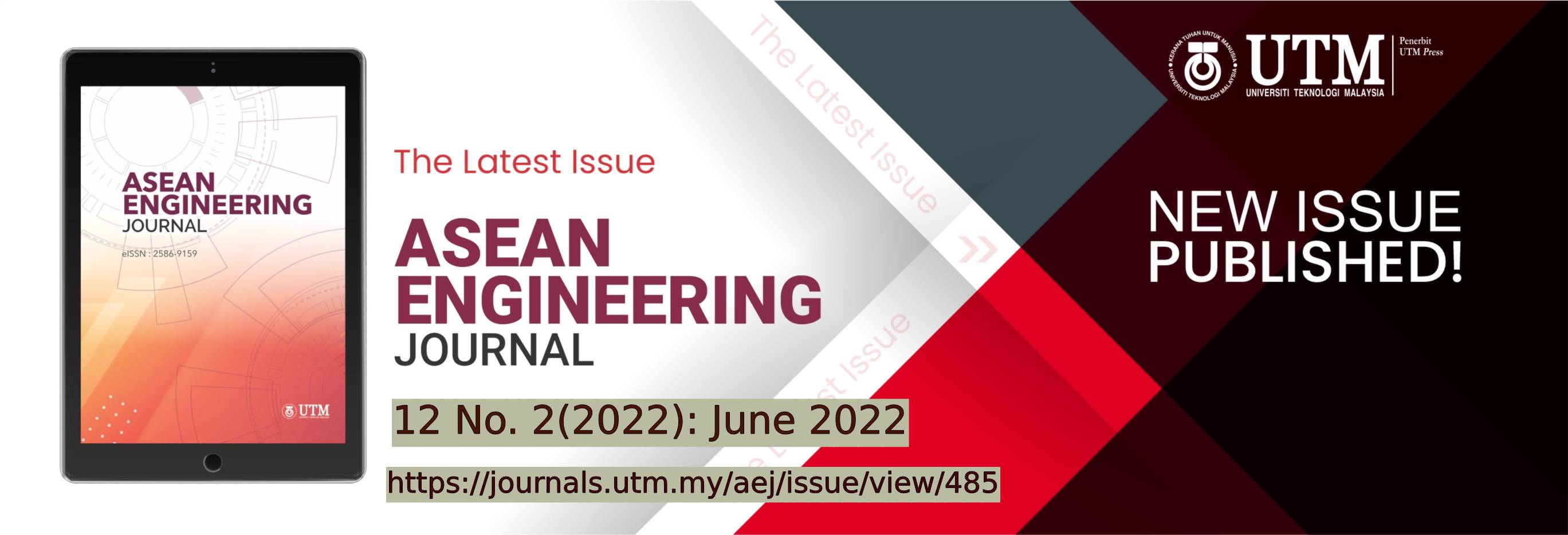PREDICTION OF MULTI-SEAM MINING-INDUCED SURFACE SUBSIDENCE IN UNDERGROUND COAL MINE IN INDONESIA
DOI:
https://doi.org/10.11113/aej.v12.17263Keywords:
FLAC3D, Multi-seam longwall mining, Numerical simulation, Surface subsidence, Weak geological conditionAbstract
This paper attempts to predict the surface subsidence induced by multi-seam longwall mining in the PT Gerbang Daya Mandiri (GDM) underground coal mine in Indonesia. Several numerical models of multi-seam longwall mining under various depths were built in the finite difference code software “FLAC3D” which was used as a tool for numerical simulations. Effect of mining sequence and influence of lower seam mining were firstly investigated. The angle of draw (AoD) and maximum surface subsidence (Smax) were used to describe characteristics of the surface subsidence. Based on simulated results, it is indicated that the undermining provides a better mining sequence in multi-seam longwall mining compared to the overmining. Mining the coal seam in an undermining order will not cause any difficult mining conditions in a lower seam, whereas some ground control problems in an upper seam are expected when the coal seam is mined in an overmining order. Under all mining depths in the undermining, extracting the lower seam panels significantly influences the magnitude of surface subsidence. The AoD and Smax increase significantly after all panels in the lower seam is mined. This indicates that very large surface subsidence is expected when multi-seam mining is applied at GDM underground coal mine. An application of some countermeasures such as adopting a large pillar width and a small panel width is suggested in this underground coal mine in order to minimize the surface subsidence caused by multi-seam longwall mining. Minimizing the surface subsidence by adopting a large pillar width and a small panel width is therefore numerically investigated in this paper. Based on simulated results, it is found that the AoD and Smax decrease significantly when larger pillar width and narrower panel width are adopted. The use of larger pillar width and narrower panel width result in smaller AoD and Smax.
References
Indonesia-Investments. Accessed in 2021. “Coal in Indonesia”. Available: https://www.indonesia-investments.com.
Takamoto, H., Sasaoka, T., Shimada, H., Oya, J., Hamanaka, A. and Matsui K. 2014. Study on Surface Subsidence due to Longwall Mining Operation under Weak Geological Condition in Indonesia. ICGCM China Proceedings. 177-182.
Sasaoka, T., Shimada, H., Zarlin, N., Takamoto, H., Matsui, K., Kramadibrata, S. and Sulistianto, B. 2014. Geotechnical Issues in the Application of Rock Bolting Technology for the Development of Underground Coal Mines in Indonesia. International Journal of Mining, Reclamation and Environment. 28(3): 150-172. DOI: https://doi.org/10.1080/17480930.2013.804258
Whittaker, B.N. and Reddish, D.J. 1989. Subsidence: Occurrence, Prediction and Control. Elsevier Science Publication. Amsterdam, The Netherlands.
Brady, B.H.G. and Brown, E.T. 2004. Rock Mechanics for Underground Mining, 3rd Edition. Dordrecht, The Netherlands.
Peng, S.S. and Chiang, H.S. 1984. Longwall Mining. John Wiley & Sons. New York, USA.
Hill, R.W. Accessed in 2020. Multiseam Design Procedures. Safety in Mines Research Advisory Committee (SIMRAC). Available:https://researchspace.csir.co.za/dspace/bitstream/handle/10204/1350/COL026.pdf?sequence=1&isAllowed=y
Zhou, Y. 1991. Evaluating the Impact of Multi-seam Mining on Recoverable Coal Reserves in an Adjacent Seam. Virginia Division of Mineral Resources Publication 104. Charlottesvilie, Virginia.
Sasaoka, T., Shimada, H., Ichinose, M., Matsui, K., Kramadibrata, S., Sulistianto, B. and Watinena, R. 2007. Improvement in Roof Support System at a New Underground Coal Mine Developed from Open-cut Highwall in Indonesia. Proceeding of the 26th International Conference on Ground Control in Mining. 122-128.
Sasaoka, T., Shimada, H., Hamanaka, A., Sulistianto, B., Ichinose, M. and Matsui, K. 2015. Geotechnical issues on application of highwall mining system in Indonesia. Vietrock 2015 an ISRM Specialized Conference. Hanoi, Vietnam.
Sasaoka T., Takamoto H., Shimada H., Oya J., Hamanaka A. and Matsui K. 2015. Surface Subsidence due to Underground Mining Operation under Weak Geological in Indonesia. International Journal of Rock Mechanics and Geotechnical Engineering. 7(3): 337-344. DOI: https://doi.org/10.1016/j.jrmge.2015.01.007
Garcia A., Altounyan P., Nitaramorn A. and Lewis A. 2010. Ground Control Aspects of a Successful Underground Coal Mine Trial in Weak Strata in Indonesia. Proceeding of the 29th International Conference on Ground Control in Mining.
Pongpanya, P., Sasaoka, T., Shimada, H., Ulaankhuu, B., Oya, J., Dwiki, S. and Karian, T. 2016. Numerical Study on Roadway Stability under Weak Geological Condition of PT Gerbang Daya Mandiri Underground Coal Mine in Indonesia. GSTF Journal of Geological Sciences (JGS). 3(1): 15-23. DOI: 10.5176/2335-6774 3.1.26
Hoek, E. and Brown, E. T. 1997. Practical Estimates of Rock Mass Strength. International Journal of Rock Mechanics and Mining Sciences. 34(8): 1165-1186. DOI: https://doi.org/10.1016/S1365-1609(97)80069-X
Bieniawski, Z. T. 1974. Estimating the Strength of Rock Materials. International Journal of the South African Institute of Mining and Metallurgy. 74(8): 312-320. DOI: https://hdl.handle.net/10520/AJA0038223X_382
Nickmann, M., Spaun, G.O. and Thuro, K. 2006. Engineering Geological Classification of Weak Rocks. IAEG2006 Paper number 492, The Geological Society of London. 1-9.
Thin, I.G.T., Pine, R.J. and Trueman, R. 1993. Numerical Modelling as an Aid to the Determination of The Stress Distribution in the Goaf due to Longwall Coal Mining. International Journal of Rock Mechanics and Mining Sciences and Geomechanics. 30(7): 1403-1409. DOI: https://doi.org/10.1016/0148-9062(93)90128-Z
Xie, H., Chen, Z. and Wang, J. 1999. Three-dimensional Numerical Analysis of Deformation and Failure During Top Coal Caving. International Journal of Rock Mechanics and Mining Sciences. 36(5): 651-658. DOI: https://doi.org/10.1016/S0148-9062(99)00027-3
Yasiti, N.E. and Unver, B. 2005. 3D Numerical Modeling of Longwall Mining with Top-Coal Caving. International Journal of Rock Mechanics and Mining Sciences. 42(2): 219-235. DOI: https://doi.org/10.1016/j.ijrmms.2004.08.007
Hoek, E., Kaiser, P. K. and Bawden, W. F. 1993. Support of Underground Excavations in Hard Rock. West Btunnel Professional Centre, Vancouver, British Columbia.
















